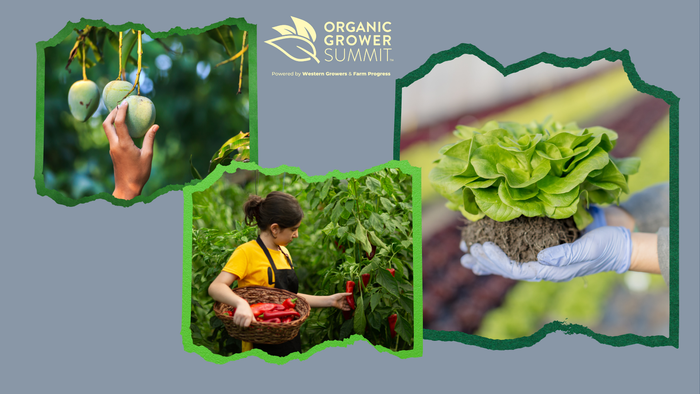6 things to know about the natural and organic market in 2024
The data-packed “The State of Natural & Organic” keynote highlights industry trends and consumer insights with a focus on Gen-Z shoppers. Learn more.
March 20, 2024

The U.S. natural products industry is a reckoning force.
“We are no longer niche,” says Carlotta Mast, SVP and market leader of New Hope Network. “We are very mainstream and we have a lot of power and influence.”
Consumer sales have more than tripled since 2007 to reach more than $300 billion in 2023 with volume growth every year, Mast says, based on Nutrition Business Journal estimates. That growth is accelerating the scale of the natural and organic products industry as the influence of Gen Z shoppers grows.
The keynote, “The State of Natural & Organic,” offered valuable, up-to-date data and perspectives about today’s marketplace for brands, investors and retailers at Natural Products Expo West on March 13. Expo West took place at the Anaheim Convention Center in Anaheim, California.
Giving a heartfelt talk, June Jo Lee, a food ethnographer who does research about people’s relationship to food, culture and their life, relayed from personal experience with her son and her research, what it’s like to live as a Gen Zer.
“Being Gen Z feels like learning to surf,” Lee says her son told her. “You feel like you’re just about to fall off the board. Crash into waves. Plunge into the ocean. Not know if you’re up or down or able to breathe. But maybe someday I’ll master surfing.”
“My research is really simple,” says Lee, a resident food ethnographer for Google Food. “I asked Gen Z, ‘Tell me what you’re eating,’ so I can see who you are. If we can see who they're becoming, we'll also know what they'll be eating.”
Here are six takeaways from Expo West’s 2024 State of Natural and Organic keynote. The event is available to watch on YouTube.
Natural products outpaces the sales of all other products. About a year ago, we saw a lot of industry outsiders ask: “Did natural hit its peak?” says Kathyrn Peters, head of industry relations, SPINS. But this industry is resilient. “Natural products are back in the growth engine, ahead of all other products.”
We see this as a continued trend across all channels we track, Peters says, including regional and independent grocery channels, conventional multioutlet, convenience channel and natural expanded channel. That’s led by natural products, specialty and wellness products.

June Jo Lee, a food ethnographer who does research about people’s relationship to food, culture and their life, speaks at "The State of Natural and Organic" keynote address during Expo West 2024.
Boom of Gen Z’s buying power. “Gen Z is basically where millennials were in 2006,” says Nick McCoy, Managing partner, Whipstitch Capital. “They are coming into consumer buying power at full force. The growth of their dollars is wildly outpacing others.”
By 2030, the Gen Z consumer—people born between 1997 and 2012—will be about 20% of buying power and Zennials—millennials and Gen Zers—will represent around 50%-60% of consumers. “They are the first digitally native generation and they are going to change the world,” Peters says.
In the U.S., Gen Zers are the most diverse and college-educated group, Lee says which equates to expansive food lives beyond family traditions.
These consumers are third culture kids, Lee says. “They’re the first internationalized youth generation,” Lee says. “They’re mixed and hyphenated. Not only with ethnic identities; they’re open and hybrid, non-binary and queer. They really explore who they are.”
Those fluid and creative identities translate into the food that’s eaten. “Their food is also very creative and very fluid,” Lee says.
Convenience and clean labels matter to Gen Z. A survey of 1,000 natural and organic food and beverage shoppers conducted in partnership with Suzy and New Hope Network found Gen Z considers convenience is food’s most important attribute, followed by clean label, price and product transparency.
These consumers place a greater importance on clean-label products than other generations, Mast says. Many are focused on plant-based and protein products, McCoy says.
E-commerce sales grew, but many brands are moving away from DTC. After dramatic drops during post-COVID years of 2021 and 2022, e-commerce grew an estimated 7.3% in 2023. That made it the fastest growing channel last year, Mast says.
Despite the growth, brick-and-mortar retail still dominates the industry. Only 8.1% of sales are in e-commerce, compared with a whopping 61.3% of sales in mass market channels.
“That’s why we’re seeing many non-shelf brands focus on migrating to the right retail shelves,” Mast says. “They’re moving from D to C to retail.”

Kathyrn Peters, head of industry relations, SPINS, speaks at "The State of Natural & Organic" keynote during Expo West 2024.
Consumers seek global flavors, organics. Last year, U.S. natural, organic and functional food and beverage sales grew an estimate 4.8% to $208 billion, outpacing total industry sales.
"Globally inspired condiments continued to be a really surprisingly hot category,” Mast says. Look for blending of formats and flavors.
Organics are outpacing non-organics, both in dollars and units, Peters says. Top food and beverage categories are soda, pasta and pizza sauce. All shoppers, but especially younger shoppers, are looking for organics.
Gen Z isn’t looking for certifications on labels like other generations. “But the one certification by far that has the most pull with Gen Z is Certified Organic,” Mast says. “That’s true for every generation.”
Profitability is more important than ever. Economic pressures mean more brands are bringing fewer new products to market, Peters says. “Super important,” Peters says. “Fewer new products does not mean less innovation.”
Brands are evolving, Peters says to be smart and incredibly disciplined to ensure a new product will be profitable.
“They can’t afford to make any misses with brand launches,” Peters says. “It’s no longer just ‘get out everything you can.’”
While retailers are putting a lot of pressure to bring prices down, brands aren’t necessarily quite ready, Peters says.
That’s created a pricing trifecta, she says. Everyday price increases are slowing. “Prices aren’t going up much more, but they’re still high,” Peters says. Dollars on promotions are going up. Discounts are higher.
This difficult operating environment will continue throughout 2024, Peters says. There will be a lot of focus on promotion and improving “price perception.”
Find out what consumers are looking for and prioritizing in their natural and organic products in the 2024 State of Natural Report.
About the Author
You May Also Like



.jpg?width=700&auto=webp&quality=80&disable=upscale)
